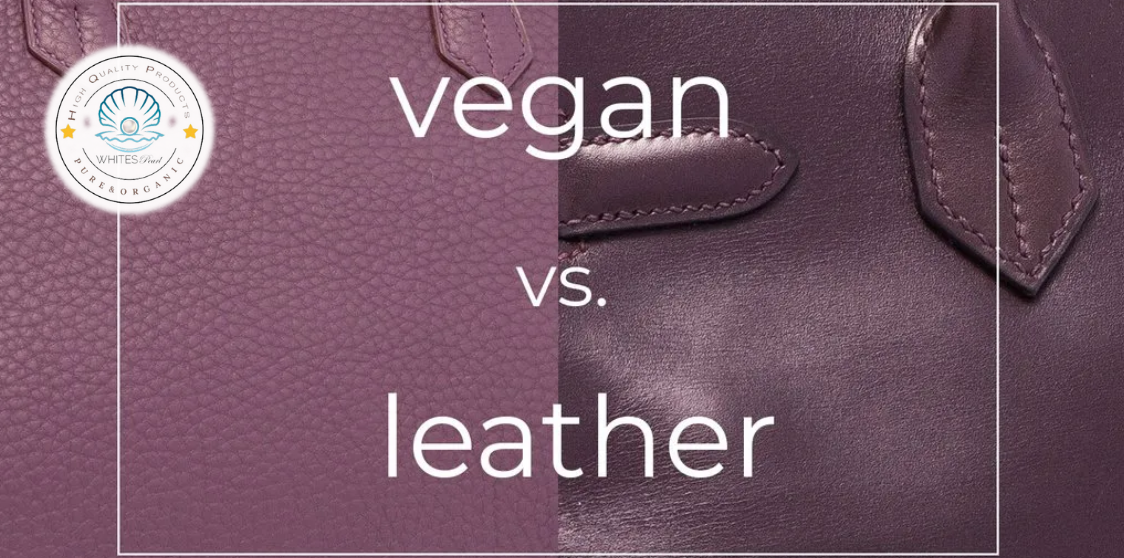
As people are becoming more woken to adopting environmentally friendly alternatives, Vegan leather has gained the limelight in the past few years. The answer to the question of whether vegan leather is better than real leather for the environment still remains somewhat ambiguous. Therefore, in this article, we will list the differences between leather vs. vegan leather, along with expert insights from Whites Pearl.
Glimpse into Leather vs. Vegan Leather
What is Vegan Leather?
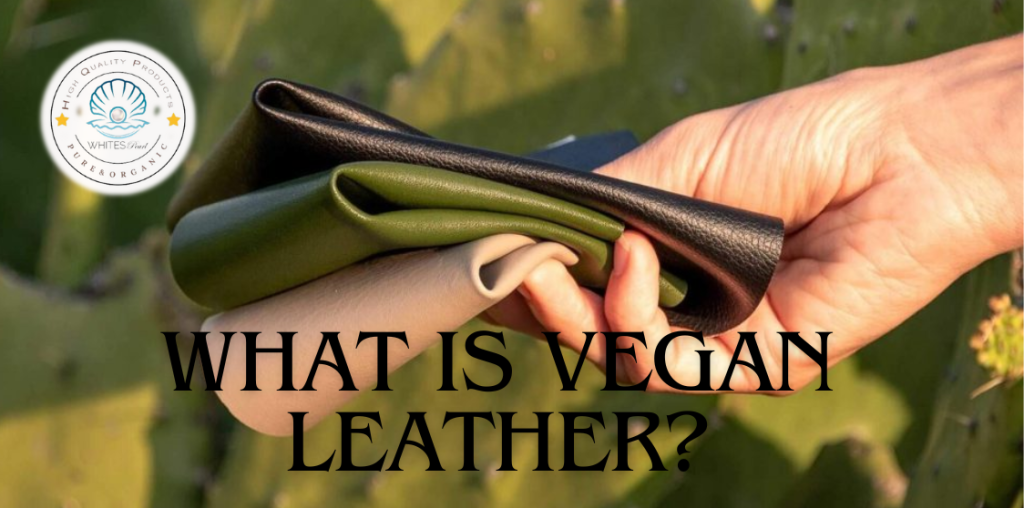
Before we get into the heated debate of the difference between leather vs. vegan leather, let us first give you an overview of what vegan leather actually is, the different types of vegan leather, and its advantages, so that you can gain an in-depth understanding of whether vegan leather is better than leather or vice versa.
Vegan leather is also known as faux leather or synthetic leather. Vegan leather is a cruelty-free alternative to traditional leather that is derived from animal hides. It is designed to mimic the look as well as the feel of genuine leather without using any animal products in its production.
Types of Vegan Leather
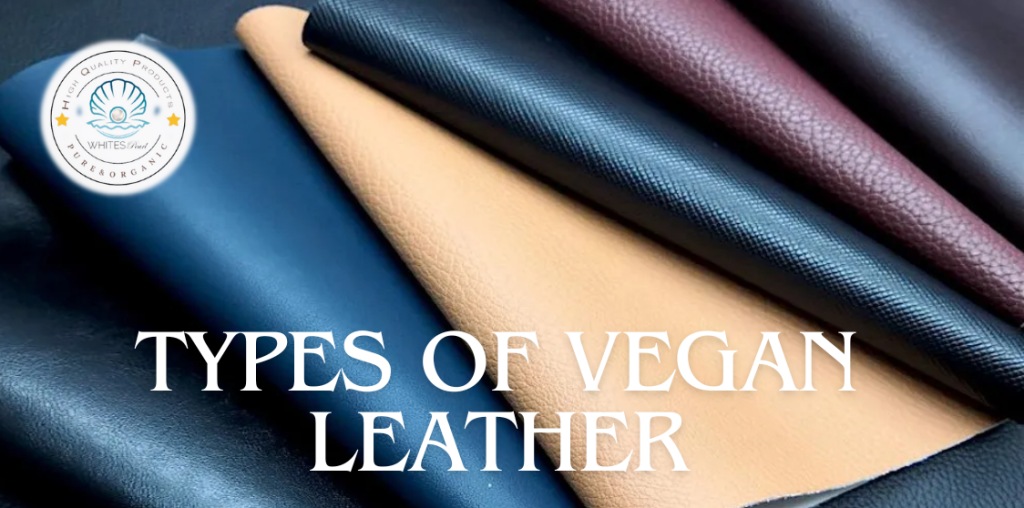
Polyurethane (PU) Leather
PU leather is one of the most common types of vegan leather. It is made by applying a layer of polyurethane to a base material, such as polyester or cotton fabric. PU leather is a type of vegan leather that can closely resemble genuine leather in texture as well as appearance which makes PU a popular choice for fashion accessories, upholstery, footwear, etc.
Polyvinyl Chloride (PVC) Leather
PVC leather is a type of vegan leather that is also known as vinyl leather, and is another synthetic material used in vegan leather production. It is made by coating a fabric backing with layers of PVC resin. PVC leather is known for its durability as well as its water resistance similar to genuine leather, but it may lack the breathability of other materials.
Recycled Materials
Some innovative vegan leather alternatives are made from recycled materials, such as plastic bottles, cork, or rubber. These materials are repurposed or recycled to create eco-friendly vegan leather options that reduce waste as well as the impact on the environment.
Plant-Based Materials
Plant-based vegan leathers are made from natural fibers and materials that are derived from plants, such as pineapple leaves (Piñatex), apple skins, mushrooms (Mylo), and cork. These materials provide biodegradable and renewable alternatives to traditional leather.
Bio-Based Polyurethane (Bio-PU) Leather
Bio-based PU leather is a sustainable alternative to conventional PU leather which is made from renewable plant sources such as corn or soybeans. It retains the look and feel of traditional PU leather while reducing reliance on fossil fuels as well as lowering carbon emissions.
Advantages of Vegan Leather
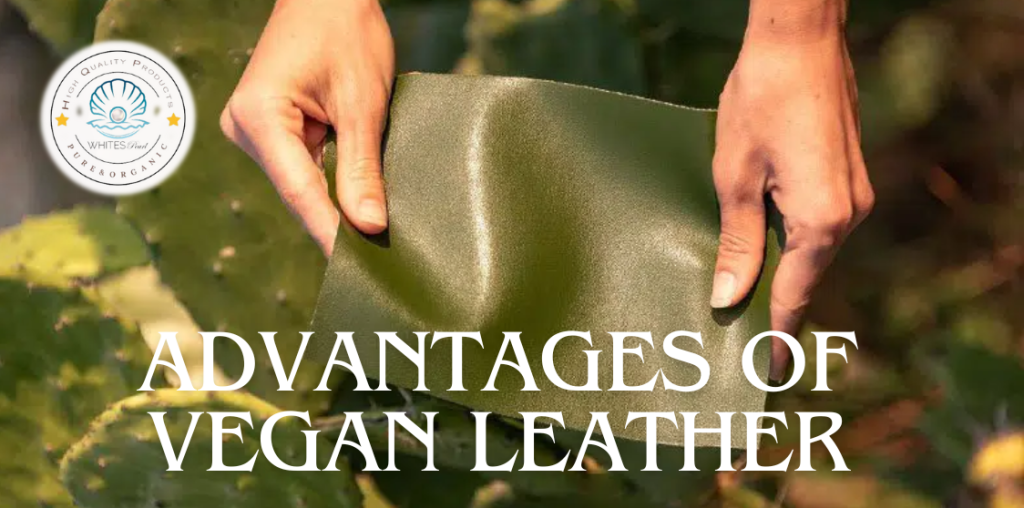
Cruelty-free
Vegan leather is manufactured in a way that doesn’t include the use of animal products or harm to animals.
Sustainable
Many vegan leather options are made from eco-friendly materials that reduce the environmental impact of traditional leather production.
Versatile
Vegan leather can be manufactured in many different textures, colors, finishes, etc.
Affordable
Vegan leather is often more affordable than genuine leather which makes it more accessible.
Genuine Leather vs. Vegan Leather: Which is better Genuine Leather or Vegan Leather
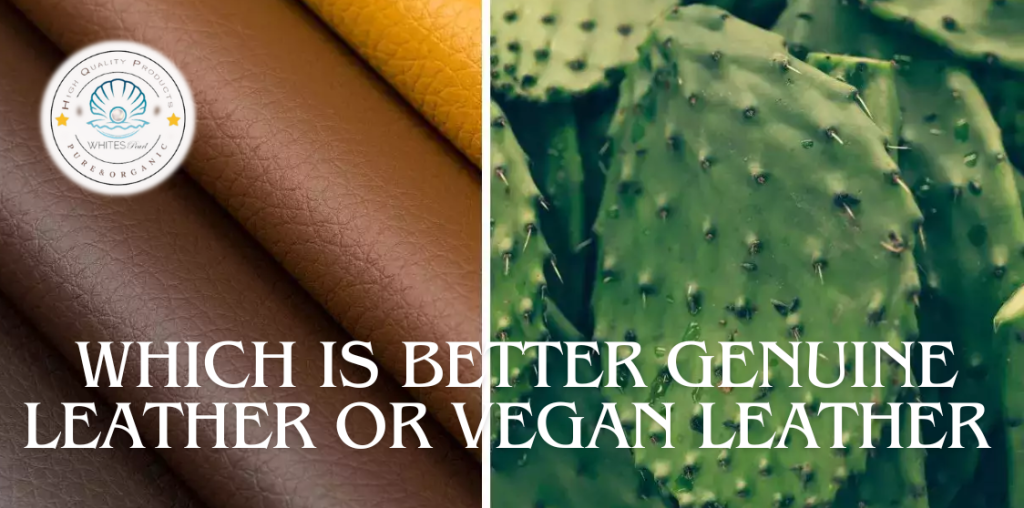
When it comes to leather, there are two main options: traditional leather which is derived from animal hides, and vegan leather, which is made from synthetic or plant-based materials. Vegan leather has emerged as a popular alternative to traditional leather that provides the leather lover with an option that is both cruelty-free as well as environmentally friendly. However, it is important to know that there have been a lot of misconceptions surrounding vegan leather therefore it’s important to separate fact from fiction so that we can make an unbiased comparison while looking at the difference between Genuine or Real Leather vs. Vegan Leather.
1. The Difference between the Durability and Quality of Genuine Leather vs. Vegan Leather.
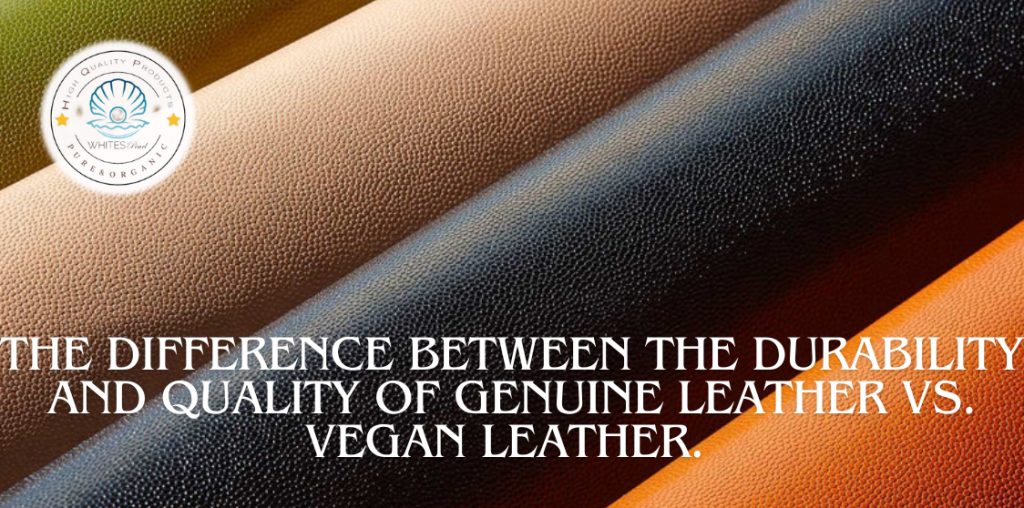
Traditional leather is known for its durability which can last for decades with proper care. The durability of vegan leather on the other hand can change depending on the materials used as well as the manufacturing process. Some vegan leather alternatives may be less resistant to wear and tear over time.
The main differences between the durability of Genuine Leather vs. Vegan Leather.
The Durability of Vegan Leather:
Vegan leather has many types, each with its own durability as well as longevity characteristics. Synthetic vegan leathers are made from materials like polyurethane (PU) or polyvinyl chloride (PVC) and are often quite durable as well as resistant to wear and tear.
One misconception surrounding vegan leather is that it is less durable but not all vegan leather is inherently less durable or of lower quality than genuine leather.
High-quality synthetic vegan leathers can be just as durable as well as long-lasting as their animal-derived counterparts. Also, recent advancements in technology as well as the manufacturing processes have led to improvements in the quality of vegan leather materials and vegan leather goods can last for several years with proper care such as using leather conditioners like Whites Pearl leather conditioner.
Durability of Natural alternatives vs. synthetic vegan leather
Natural alternatives to synthetic vegan leather, such as cork, Piñatex (made from pineapple leaves), and mushroom leather (such as Mylo), also offer good durability. These materials are chosen for their sustainability as well as their eco-friendly properties.
Cork, for example, is known for its resilience as well as resistance to moisture and abrasion which makes it a durable option for vegan leather products like vegan bags and vegan wallets.
The Durability of Genuine Leather:
Genuine leather is prized for its exceptional durability. It is derived from animal hides; genuine leather undergoes a tanning process that enhances its strength as well as resilience. With proper care and maintenance, such as using leather conditioner like Whites Pearl leather conditioner genuine leather products can last for many years. Genuine leather ages gracefully in comparison to vegan leather as it often develops a beautiful patina and more character over time.
The durability of genuine leather depends on factors such as:
- the type of animal hides used
- the tanning process employed
- the quality of leather craftsmanship.
Full-grain leather, which retains the outer layer of the hide and its natural grain, is considered the most durable and highest quality.
Top-grain leather, which is made from the outer layer of the hide, is also durable but may be slightly less resistant to wear than full-grain leather.
In terms of durability, full-grain leather is better than both top-grain leather as well as vegan leather
The Overall Winner – Genuine Leather vs. Vegan Leather.
One can say that with the advancement in technology, there is a tie between the two when it comes to the durability of the leather, but guanine leather does age more gracefully and develops more character and a beautiful patina over time, unlike vegan leather. So, genuine leather is better than vegan leather when it comes to vintage timeless beauty.
2. The Difference between the Material Composition: Genuine Leather vs. Vegan Leather.
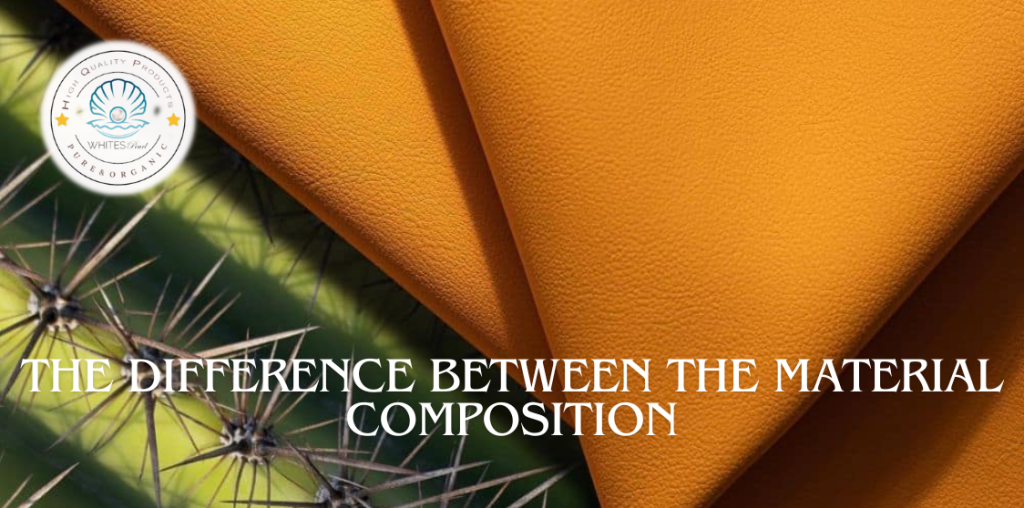
The Material Composition of Vegan Leather
Vegan leather is made from many different types of materials that are taken from both synthetic and natural sources. Vegan leather is typically made from synthetic materials such as polyurethane (PU) or polyvinyl chloride (PVC), as well as natural alternatives like cork, pineapple leaves (Piñatex), mushroom leather (Mylo), etc. These materials are chosen for their cruelty-free as well as environmentally friendly properties.
The Material Composition of Genuine Leather
Genuine leather is sourced from the hides of animals such as cows, sheep, and goats. The production process begins with the removal of the animal’s skin, which is then treated through various tanning methods to preserve it as well as to enhance its properties. Tanning agents such as chromium salts or vegetable extracts are used to stabilize the collagen fibers in the hide which makes it more durable as well as flexible. The resulting leather is known for its natural beauty, strength, etc. With proper care and maintenance, genuine leather products can last for many years, such as using a leather conditioner that is made from organic material like Whites Pearl Leather Conditioner.
The Overall Winner – Genuine Leather vs. Vegan Leather.
Genuine leather is the clear winner, in terms of material composition. Genuine leather provides an option that is natural as well as biodegradable. Its durability makes it a preferred choice for people who are looking for leather products that are high in quality. While vegan leather provides cruelty-free alternatives as well as uses innovative materials, genuine leather’s natural properties as well as long-standing reputation set it apart as the superior choice for those prioritizing quality in their leather goods.
3. The Difference between the Environmental Impact: Genuine Leather vs. Vegan Leather.
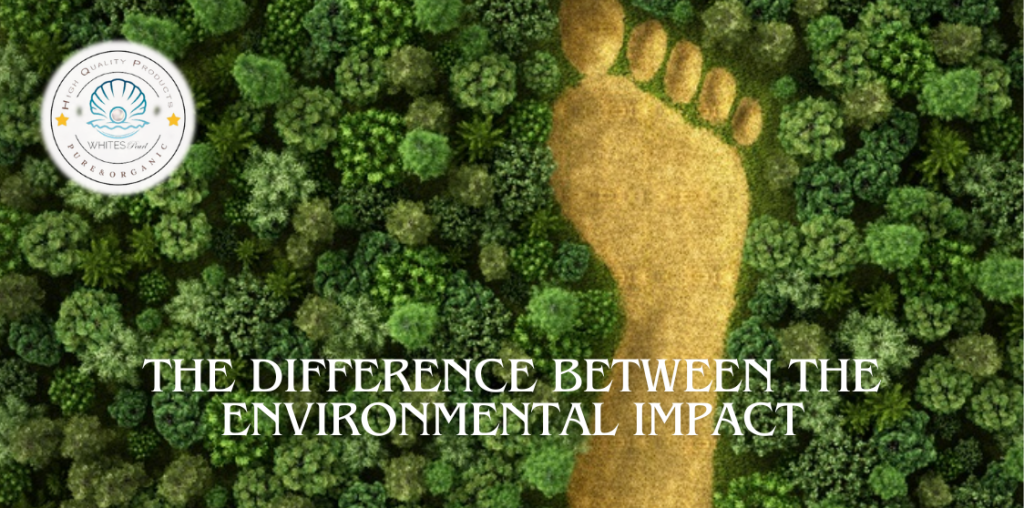
The Environmental Impact of Vegan Leather
Vegan leather is often touted as a more sustainable alternative to genuine leather, especially when made from natural materials like cork or Piñatex. These materials are renewable as well as biodegradable which reduces their environmental footprint.
The Environmental Impact of Genuine Leather
The environmental impact of genuine leather production can change depending on factors such as the tanning process used and the sourcing of the hides. Leather tanning can have significant environmental consequences, but some types of leather, such as vegetable-tanned leather, offer more sustainable options.
The Overall Winner – Genuine Leather vs. Vegan Leather.
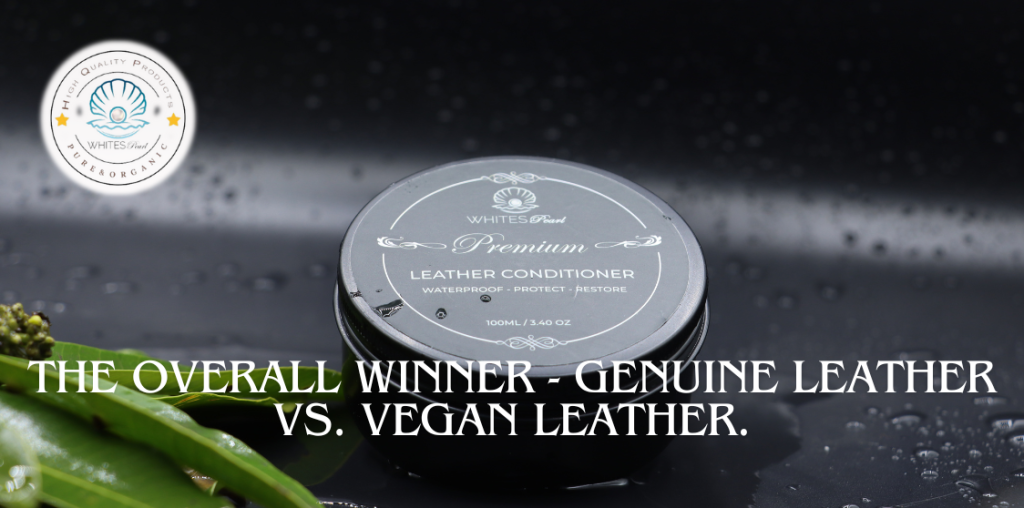
Genuine leather wins the environmental impact round as well. Both of them have their environmental impacts but genuine leather’s biodegradable nature as well as long-lasting durability give it an edge over vegan leather in terms of sustainability.
Although genuine leather production involves animal farming as well as processing, which can contribute to environmental impacts such as greenhouse gas emissions as well as land use, the environmental impact of vegan leather production is also not without its challenges.
Vegan leather, particularly when made from synthetic materials like polyurethane (PU) or polyvinyl chloride (PVC), relies on the petrochemical industry for raw materials. The extraction along with the processing of these materials can generate pollution as well as contribute to resource depletion.
To top it off, the production of plant-based alternatives for vegan leather, while generally more sustainable than synthetic options, still requires resources such as water, land, transportation, energy, etc. for cultivation as well as processing. Vegan leather contributes more to the environmental footprint than genuine leather overall.
4. Care and Maintenance: Genuine Leather vs. Vegan Leather
How to care for Genuine leather and Vegan leather goods: Expert Tips from Whites Pearl
Proper care is essential to maintain the beauty and longevity of your leather goods, whether they’re made from genuine leather or vegan leather. The caring process for the leathers is pretty much the same. Below are some expert tips on how to care for both types of leather.
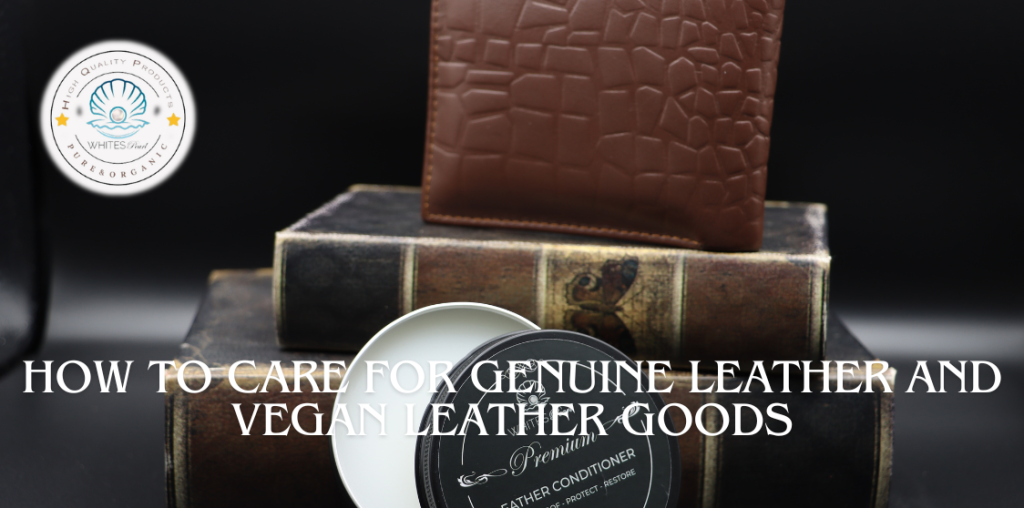
How to care for Genuine Leather:
Genuine leather requires you to do regular maintenance in order to preserve its quality and appearance.
- The first step is to regularly clean your leather goods with a gentle leather cleaner such as bespoke leather cleaner to remove any dirt as well as grime with a lint-free cloth.
- After cleaning you need to apply a small amount of leather conditioner such as Whites Pearl natural leather conditioner, which is made from 100% organic ingredients to a clean cloth and gently massage it into the leather in circular motions.
- Then you need to allow the conditioner to penetrate the leather for a few minutes before buffing away any excess with a fresh cloth.
- Prevention is also the best step in protecting your leather goods. You need to protect your genuine leather from:
- Direct sunlight
- Excessive moisture
- Harsh chemicals to prevent damage.
How to care for Vegan Leather:
To care for vegan leather, you need to gently wipe away dirt and stains with a damp lint-free cloth and mild soap. Avoid harsh chemicals as well as any abrasive cleaners, as they can damage the material. To remove tough stains on vegan leather, use a mild soap and water solution to spot-clean the affected areas. For added protection as well as longevity you should use a leather conditioner that’s made from 100% organic material such as Whites Pearl natural leather conditioner which has been specially formulated for vegan leather.
The bottom line to Genuine Leather vs. Vegan Leather
Both vegan leather and genuine leather have their own benefits and drawbacks. Vegan leather provides cruelty-free and environmentally friendly options, while genuine leather offers durability, longevity, and a timeless aesthetic. The choice between which is better genuine leather or vegan leather depends entirely on how it aligns with the values as well as preferences of the buyer. And with products like Whites Pearl natural leather conditioner, caring for as well as maintaining leather—whether vegan or genuine—becomes an easy as well as sustainable task.
Also Read
The History and Development of Leather Care Products
Unlock the Secrets of Natural Leather Care with Whites Pearl: Protect, Preserve, and Prolong
Whites Pearl Leather Care Packaging: The Eco-Friendly Evolution of Packaging in Leather Care


